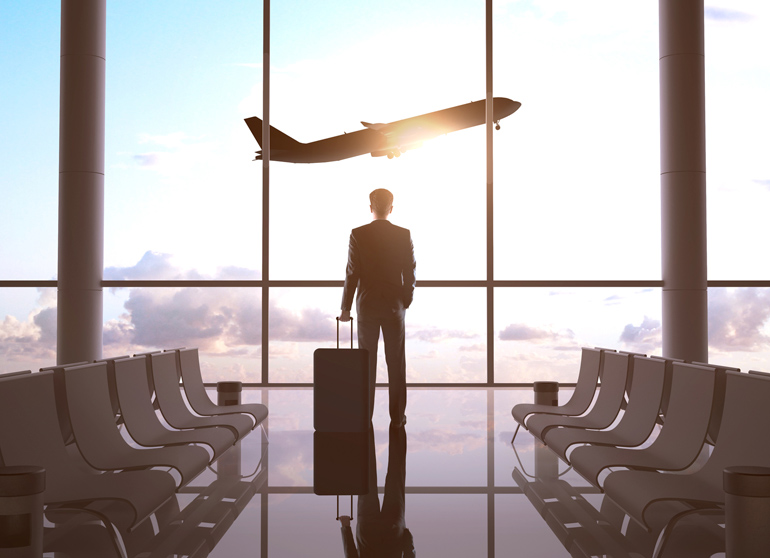Travel can be stressful. Traveling with tech more so. Just like traveling with children or pets, your gadgets need constant care and feeding so as not to break. Here are a selection of tips to help make your travel as stress-free and painless as possible.
1: Get a decent bag to store and carry your stuff
There’s a limit to how much tech you can cram into a pocket or handbag. And if you are away for an extended period, then you will need more tech than normal. Also, if you get a bag that is designed to carry tech such as laptops or tablets, it makes life easier.
Must read: Top gadgets for the security and privacy-conscious (or the super paranoid!)
I’ve experimented with a lot of bags lately, and my current bag of choice is the Maxpedition Kodiak Gearslinger. It’s a slingback pack — a rucksack that has a single strap that goes over one shoulder — that’s big enough to swallow my MacBook Pro, iPad Pro, hotspot, chargers and cables, and still has space left for lots more stuff.
The pack is comfortable enough for extended periods of carry and is tough, durable, and waterproof enough to protect its contents and give them a fighting chance.
My recommendation with any pack is to test it before you buy or buy it from somewhere you can return it — because comfort is a top priority, and since we’re all built differently, what works for me may not work for you.
2: Simplify
Don’t carry too much. After a week, every ounce will feel like a pound.
In an ideal world, get a single charger that will charge all your devices — USB-A and USB-C — and strip your cables down to a bare minimum. Spares are good to have, but remember that you will have to carry those spares, and unless you are going into the wilderness, you’ll probably be able to buy a spare cable or charger if you do need one.
Here’s the kit I roll with.
I have a Zendure SuperTank power bank that acts as both a charging hub and a power bank. I also carry my MacBook charger, which charges my MacBook Pro and the Zendure SuperTank. I have one USB-C-to-Lightning cable, one USB-C-to-USB-C cable, and my Apple Watch charger. I also carry a USB data blocker for those times I end up using a sketchy charger.
I sometimes augment this kit with a Netgear portable hotspot (with external antenna) if I will be slurping down a lot of cellular data, and an Android smartphone as a backup.
3: Charge up when you can
If you’re on the move a lot, charge up your devices whenever the opportunity presents itself. I charge up everything while I sleep, and then I take opportunities to top up my iPhone, iPad, MacBook Pro, and power bank as and when I get the chance.
Because I carry such a large power bank around with me, which has enough capacity to recharge my MacBook Pro one, or my iPhone seven times, I have a lot of wriggle room, but I don’t let it make me complacent (because my power bank could break, or be lost or stolen). I have my charger and cables close to hand in my bag, and I bring them into action whenever I’m close to a power outlet.
I also tend to keep devices switched off or in ‘low power mode’ when not in use, which helps to extend battery life (and stops me from being glued to a display the whole time).
4: Be prepared to burn through data
If you’re used to fast and limitless internet at your home or office, then expect to mercilessly hammer your 3G/4G cellular data. It’s crazy how watching a few videos on YouTube and scrolling mindlessly for a few minutes on Facebook can burn through a gigabyte of data.
Make sure you know how much cellular data your smartphone or tablet has access to, and be crystal clear as to how much roaming data you get if you go abroad, and of any associated costs. Going over your data allowance, especially when abroad, can get very expensive very quickly.
Having a copy of any data you’ll need on an external storage drive — preferably encrypted — might be a good idea.
Also, this is the time when moving all your stuff into the cloud might come back to bite you. Any bit of data you need will need downloading over a connection that might be both limited, and expensive.
If you are planning an extended trip away then I also recommend you make as much use of Wi-Fi as you can, both paid for services and the free connections offered at restaurants and cafes. I also strongly suggest that you protect yourself, your devices, and your data connection by making use of a trusted VPN service (such as F-Secure’s Freedome).
5: Consider leaving some tech at home
Do you need a smartphone, tablet, and laptop? Remember that not only will you need to lug it around with you, but that while on the road it is vulnerable to damage and theft.
At the very least, make sure that you have ample insurance to cover all your toys — and don’t skimp on the coverage, because smartphones and laptops and tablets and DSLRs all add up, and replacing anything that gets lost or stolen would be a very painful day.



